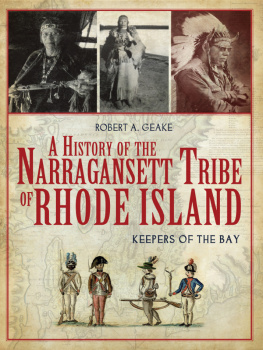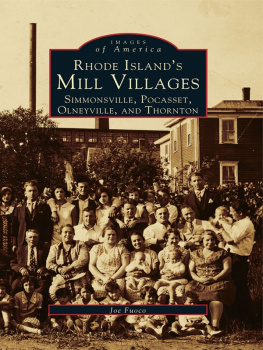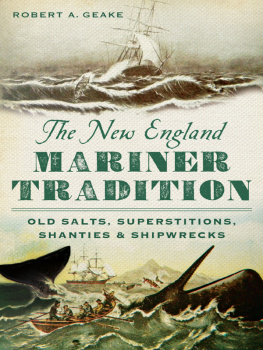

Published by The History Press
Charleston, SC 29403
www.historypress.net
Copyright 2011 by Robert A. Geake
All rights reserved
Cover images: Topographical chart of the Bay of Narragansett (1777). Courtesy of the John Carter Brown Library at Brown University; photo of powwow by James Allen.
First published 2011
e-book edition 2012
Manufactured in the United States
ISBN 978.1.61423.842.3
Geake, Robert A.
A history of the Narragansett tribe of Rhode Island : keepers of the bay / Robert A. Geake.
p. cm.
Includes bibliographical references.
print edition ISBN 978-1-60949-258-8
1. Narragansett Indians--History. 2. Narragansett Indians--Government relations. 3. Narragansett Indians--Social life and customs. I. Title.
E99.N16G43 2011
323.1197344--dc22
2011005778
Notice: The information in this book is true and complete to the best of our knowledge. It is offered without guarantee on the part of the author or The History Press. The author and The History Press disclaim all liability in connection with the use of this book.
All rights reserved. No part of this book may be reproduced or transmitted in any form whatsoever without prior written permission from the publisher except in the case of brief quotations embodied in critical articles and reviews.
This book is dedicated to the memory of Ickey Francis E. Brown.
Contents
Acknowledgements
This history, as with any other could not have been written without the research and published accounts of earlier historians, as well as those oral historians in the Narragansett tradition who have spoken to us. I would encourage readers as well to visit Tomaquag Museum and attend the public powwows when offered, to learn more about the tribe.
I want to acknowledge the courtesy of John Brown, the Narragansett tribes preservation officer for reading and discussing the manuscript with me, as well as those members I have met over the years who have given me a glimpse into their lives, and thus, the stoic dignity that I will always see an indelible mark of their people.
In researching this book, I had immeasurable help from librarians and staff of the John Carter Brown Library and the Hay Library at Brown University, as well as the Rhode Island Historical Society and the Providence Public Library.
I want to thank especially, Leslie Tobias-Olsen of the John Carter Brown library, and Ms. Lee Teverow and J.D. Kay of the RIHS, Richard Ring of the Providence Public Library, and Paul Campbell, Archivist for the City of Providence, for their assistance. I also want to thank Dr. Patrick Conley.
And finally, this book would not have been written without the support of my family and friends, as well as those acquaintances who have patiently answered questions, read parts of the manuscript, and lent their support. I want to thank Ted Widmer, director of the John Carter Brown library for his encouragement, Professors William Simmons and Linford Fisher for their reading and conversation, as well as local historian Henry A.L. Brown, and author J. North Conway for encouraging me to send the manuscript to the History Press.
Part I
KEEPERS OF THE BAY
Chapter 1
Early European Encounters
Narragansett oral history tells us that the aboriginal people of Rhode Island have existed, in Sachem Canonicuss words, since time out of mind. Anthropological evidence shows that as far back as thirty thousand years ago, the tribe lived in the forests and along shoreline of southern New England, subsisting on hunting, gardening and gathering from the abundant resources available in their homeland.
At the period of their greatest authority, the Narragansett had a domain that extended throughout most of what is now Rhode Island, from Westerly in the southwest to about Pawtucket and the Blackstone River valley in the northeast, and also included Block Island offshore and Conanicut Island in Narragansett Bay.
Narragansett sachems ruled extensive territories by their authority respected beyond traditional homelands, holding considerable influence over the Nipmuck, Pokanoket, eastern Niantic and other remaining tribes of the area. At the peak of this authority, the tribes population was reputed to be as high as thirty-five to forty thousand.
In communities throughout southern New England, these Native Americans predominately grew corn, beans and squash though also hunted deer, beaver, fowl and sea birds, as well as fished and harvested clams and oysters from the bay. Early tools were made from shells or soapstone that had been quarried from stone outcroppings on their lands, including sites identified in Oaklawn and Neutaconcanut Hill. The Narragansett also obtained wealth from the shores in the way of Wampompeage, or wampum, as it came to be known to Europeans, harvesting the unlimited resources of shells from the bay and fashioning the pearl-like interiors of whelks and the purple shells of the quahog into a currency that was used up and down the eastern seaboard. William Wood wrote in an early description that the Narragansett were Mint-masters, so skilled in their manufacturing that English attempts at producing counterfeit currency were dismal failures.
The origins of the Narragansett people have been debated for at least three centuries; however, William Simmons related the earliest known reference from oral history to a great sachem named Tashtasick. It was the eldest grandson of this sachem, known as Canonicus, who would befriend Roger Williams during the period in which the tribe is most recorded.
Narragansett members called the first Europeans they encountered Chauquaquock, or knife-men, and were quick to recognize the advantages of trading for the iron axes, knives and hoes that these visitors brought to their shores. Despite the initial eagerness to deal with the newcomers, there is no doubt that the English who would eventually colonize the Narragansett country interrupted a successful way of life that had formed over many generations.
The first European record of the tribe came from the visit of Giovanni da Verrazzano, who spent fifteen days with the Narragansett during his journey up the Atlantic seaboard in 1524. His letter to Francis I contained an early description of Narragansett Bay:
The coast of this land runs from west to east. The harbor mouth faces south, and is half a league wide; from its entrance it extends for XII leagues in a northeasterly direction, and then widens out to form a large bay of about XX leagues in circumference. In this bay there are five small islands, very fertile and beautiful, full of tall spreading treesThen, going southward to the entrance of the harbor, there are very pleasant hills on either side, with many streams of clear water flowing from the high land into the sea.
The Narragansett welcomed the visitors, as was their custom, boarding their ships bearing gifts and leading them back to their homes for feasting and entertainment. Tribal history records that the explorer was greeted by Tashtasick and by Canonicus, who was then a young man. Verrazzano described the tribe as the most beautiful and have the most civil customs that we have found on this voyage. He was much taken by their appearance, describing the men as taller than we are; they are a bronze color, some tending more towards whiteness, others to a tawny color. The face is clear-cut, the hair is long and black, and they take great pains to decorate it; the eyes are black and alert, and their manner is sweet and gentle.
Next page











